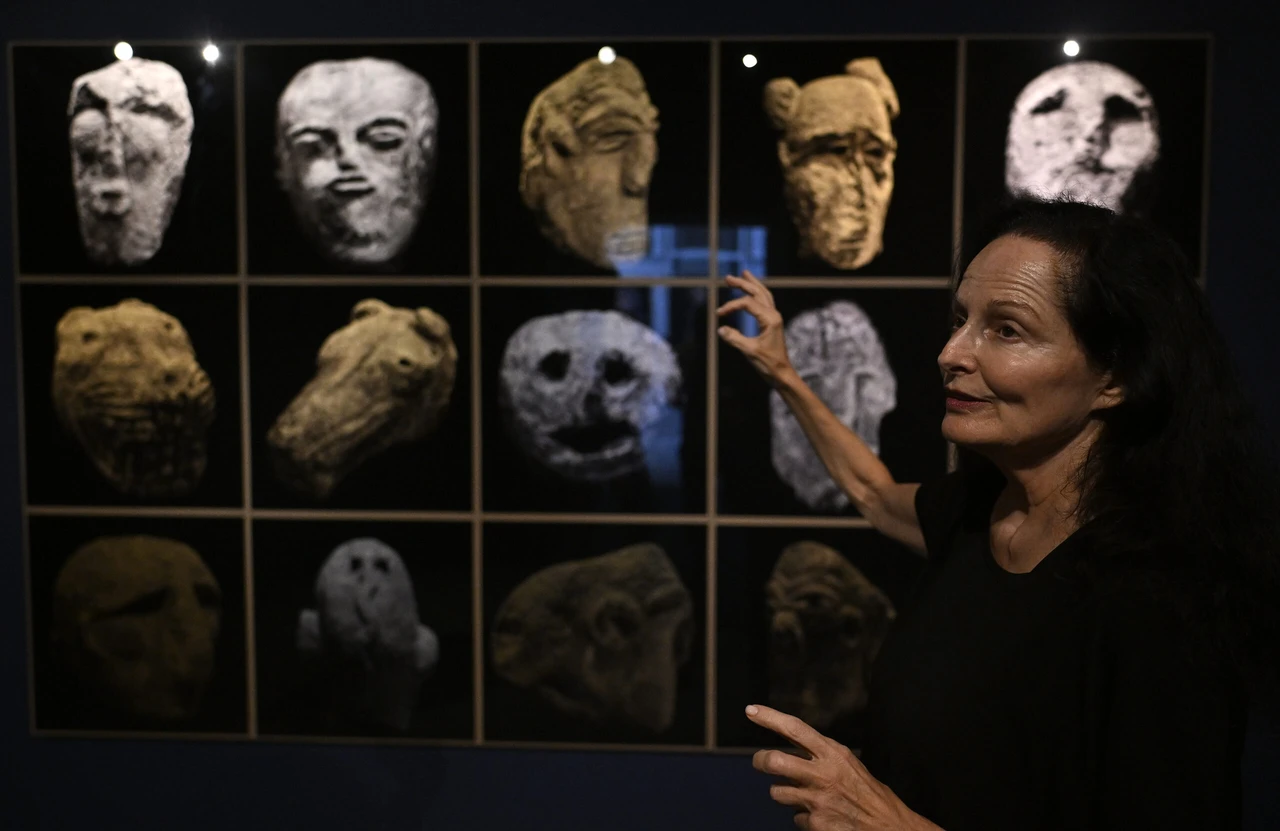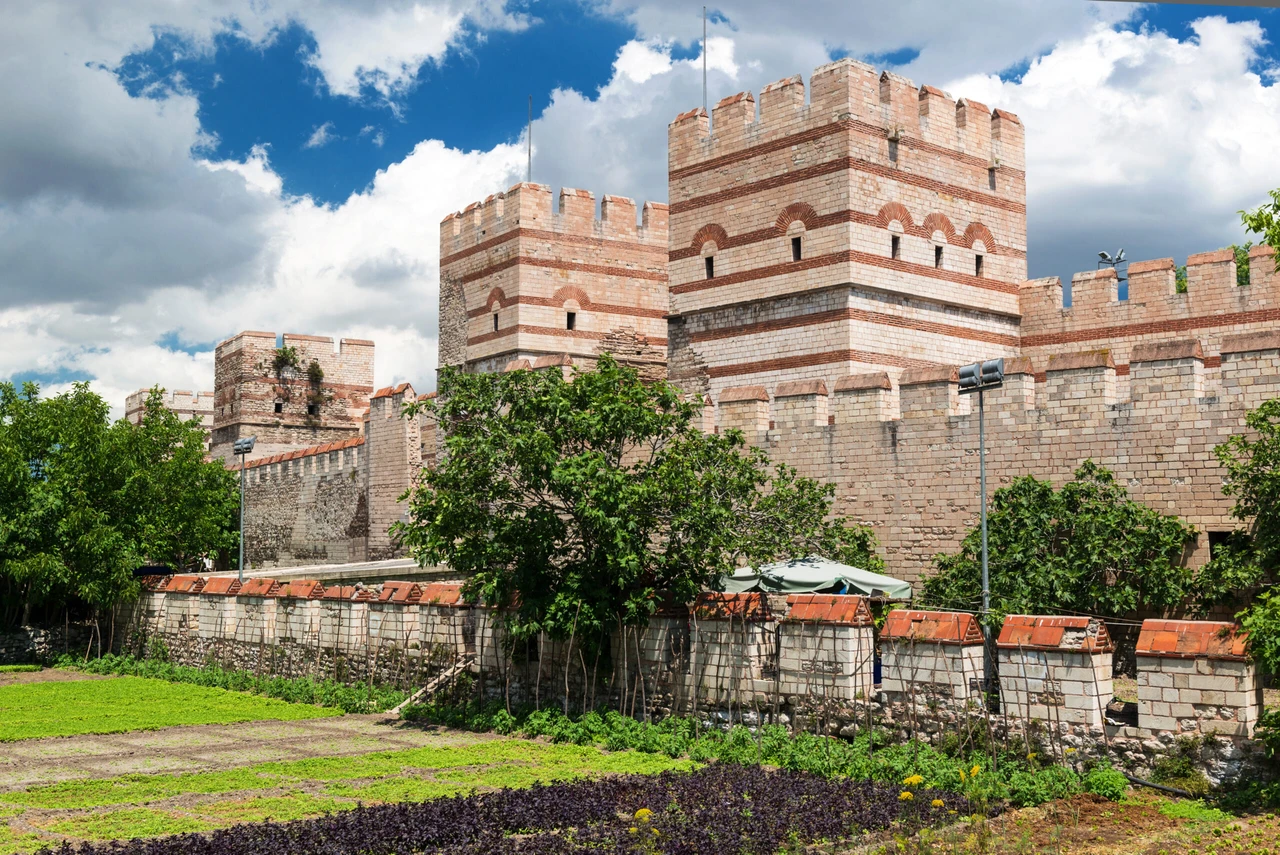Gobeklitepe photos captivate Spanish audience at Madrid exhibition
 Spanish photographer Isabel Munoz, who traveled to eastern Turkiye to capture the famed ancient complex of Gobeklitepe, one of the country’s most important archaeological sites, presents statements on her exhibition to open in Madrid, Spain, October 8, 2024 (AA Photo)
Spanish photographer Isabel Munoz, who traveled to eastern Turkiye to capture the famed ancient complex of Gobeklitepe, one of the country’s most important archaeological sites, presents statements on her exhibition to open in Madrid, Spain, October 8, 2024 (AA Photo)
Spanish photographer Isabel Munoz, known for her archaeological and anthropological work, is set to showcase photographs of the ancient stone structures of Gobeklitepe and its surroundings at an exhibition in Madrid.
The exhibition, titled “A New History,” will introduce Spaniards to the cradle of civilization, highlighting the profound impact of Gobeklitepe on humanity’s understanding of early culture.

Glimpse into the cradle of civilization
Supported by Türkiye’s Ministry of Culture and Tourism and the Turkish Embassy in Madrid, Munoz’s “A New History” Gobeklitepe photo exhibition will open on October 12 at the National Museum of Anthropology in Madrid.
Speaking to reporters during the exhibition’s preparations, Munoz expressed her awe for Gobeklitepe: “Gobeklitepe is first and foremost a discovery of humanity. I call it Year Zero of civilization. We might not yet grasp its full significance, but it’s something extraordinary. It’s where all of humanity’s designs originated.”
Munoz shared that she worked on this project with intense emotions, particularly at Karahantepe, which she described as affecting her even more deeply than Gobeklitepe. “We are talking about 9,600 B.C. in Türkiye. This is the beginning. The excitement and emotions I felt while photographing these places were beyond anything I could express. It was truly extraordinary.”

Changing Spain’s understanding of bullfighting history
Munoz highlighted that while Spain is rich in Neolithic remains, Türkiye holds a unique position in terms of ancient structures and history. The discovery of Gobeklitepe and its surrounding structures has also reshaped how Spaniards view their own history, particularly bullfighting.
“Spain and Türkiye share many common traits, and bullfighting is one of them,” Munoz said. “However, the bull and shaman figures at Gobeklitepe prove that the origins of bullfighting go back even further—5,000 years ago in Türkiye. I even showed this to a matador friend, who was initially surprised but eventually confirmed it. We’ve always believed bullfighting originated in the Hellenistic Period, but Gobeklitepe and Karahantepe have revealed otherwise.”

Picasso and Gobeklitepe: A connection across time
“I believe Gobeklitepe and its surroundings represent the greatest discovery in the archaeological world,” Munoz remarked. She added that the animal and human figures at Gobeklitepe reminded her of Pablo Picasso’s famous “Guernica” painting.
“If Picasso were alive today and saw Gobeklitepe, he would be astonished. The figures at Gobeklitepe resemble a Picasso painting,” she noted.
Capturing the magic of Gobeklitepe at night
Munoz, who visited the region seven times to photograph Gobeklitepe, said she was overwhelmed with excitement during each trip. “This has been a truly special project for me. My night photography sessions were particularly extraordinary. There were moments when I felt those stones were alive, as if they were speaking, moving with the light of the night.”
“I felt as though the ancient people of that time were close to me. That’s what I aimed to convey through my photographs,” she added.

Türkiye’s soil embodied in every frame
Munoz revealed a special touch in her exhibition: she included a small amount of soil from the Gobeklitepe area in each of the frames showcasing her photos. “Türkiye should be here,” she said, referring to this unique addition.
The photographer also applied a technique she developed, called “Tepetype,” by printing on Turkish soil. She expressed her gratitude to Gobeklitepe excavation leader Professor Necmi Karul and other officials for giving her the freedom to explore this creative process.
Munoz’s exhibition marks the first time that over 100 photos of Gobeklitepe will be presented outside Türkiye. The exhibition will also feature a photograph of a life-sized wild boar sculpture, carved from limestone, discovered in September 2023. This image will be shown to the public for the first time during the exhibition, which will remain open until January.



